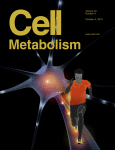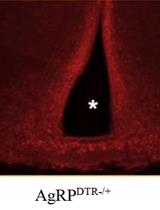- EN - English
- CN - 中文
Running Reward Conditioned Place Preference Task
运动奖励条件性位置偏爱任务实验
发布: 2016年05月20日第6卷第10期 DOI: 10.21769/BioProtoc.1816 浏览次数: 13494
评审: Masahiro MoritaShai BerlinAna Perez-Villalba
Abstract
The conditioned place preference (CPP) test is a standard pre-clinical behavioral tool used to study the motivational effects of drugs and non-drug treatments in experimental animals. The basic characteristic of this task involves the association of a particular environment and contextual cues with a reward stimulus, followed by the association of a different environment with the absence of the reward stimulus (Prus and Rosecrans, 2009). Besides the motor component, voluntary wheel running exercise also has a rewarding component, and has been suggested as a strong natural reinforcer. Consistent with this notion, rodents will readily begin to run when a wheel is introduced (Eikelboom and Mills, 1988; Looy and Eikelboom, 1989), will work by lever pressing to gain access to a running wheel (Pierce et al., 1986), and spend more time in a place previously associated with the aftereffects of running (Lett et al., 2000; Lett et al., 2001). More recently, we underscored an important role for the adipocyte-derived hormone leptin in midbrain dopamine neurons in the modulation of running reward (Fernandes et al., 2015). Here, we describe a CPP protocol to measure the rewarding aftereffects of wheel running exercise in mice.
Keywords: Physical activity (体育活动)Materials and Reagents
Animals
- Floxed Stat3 mice (C57Bl6 background) [Osaka, Japan (Takeda et al., 1998)]
Note: All experiments were carried out in accordance with the guidelines and approval of the Institutional Animal Care Committee of the CHUM Research Center. Floxed Stat3 mice (C57Bl6 background) in which loxP sites flank exon 22 of the Stat3 gene that encodes a tyrosine residue (tyr705) essential for Stat3 activation, were graciously provided by Dr. Shizuo Akira [Osaka, Japan (Takeda et al., 1998)]. Female mice homozygous for the floxed Stat3 allele were crossed with male mice heterozygous for the floxed Stat3 allele and heterozygous for the DAT-Cre transgene [B6.SJL-Slc6a3tm1.1(cre)Bkmn/J] (Backman et al., 2006) to generate DAT-Cre-Stat3fl/fl mice and littermate controls (Stat3fl/fl or Stat3fl). Male mice were weaned at P28 and housed in a temperature and humidity controlled room that was maintained on a 12:12 hour reverse light/dark cycle. CPP experiment (pre-test, conditioning trials and post-test) was conducted in the dark phase of the cycle.
Equipment
- Low-profile wireless running wheel for mouse (Med Associates Inc., catalog number: ENV-044 )
- Three-compartment automated mouse CPP chambers (Med Associates Inc., catalog number: ENV-3013 )
Software
- Wheel Manager software (Med Associates Inc., catalog number: SOF-860)
Procedure
文章信息
版权信息
© 2016 The Authors; exclusive licensee Bio-protocol LLC.
如何引用
Fernandes, M. F. A. and Fulton, S. (2016). Running Reward Conditioned Place Preference Task. Bio-protocol 6(10): e1816. DOI: 10.21769/BioProtoc.1816.
分类
神经科学 > 行为神经科学 > 实验动物模型 > 小鼠
您对这篇实验方法有问题吗?
在此处发布您的问题,我们将邀请本文作者来回答。同时,我们会将您的问题发布到Bio-protocol Exchange,以便寻求社区成员的帮助。
Share
Bluesky
X
Copy link













